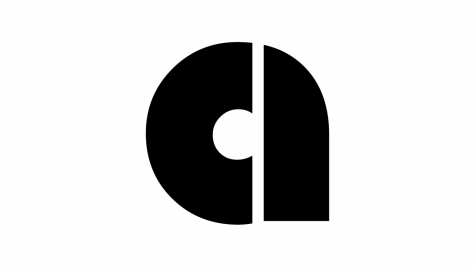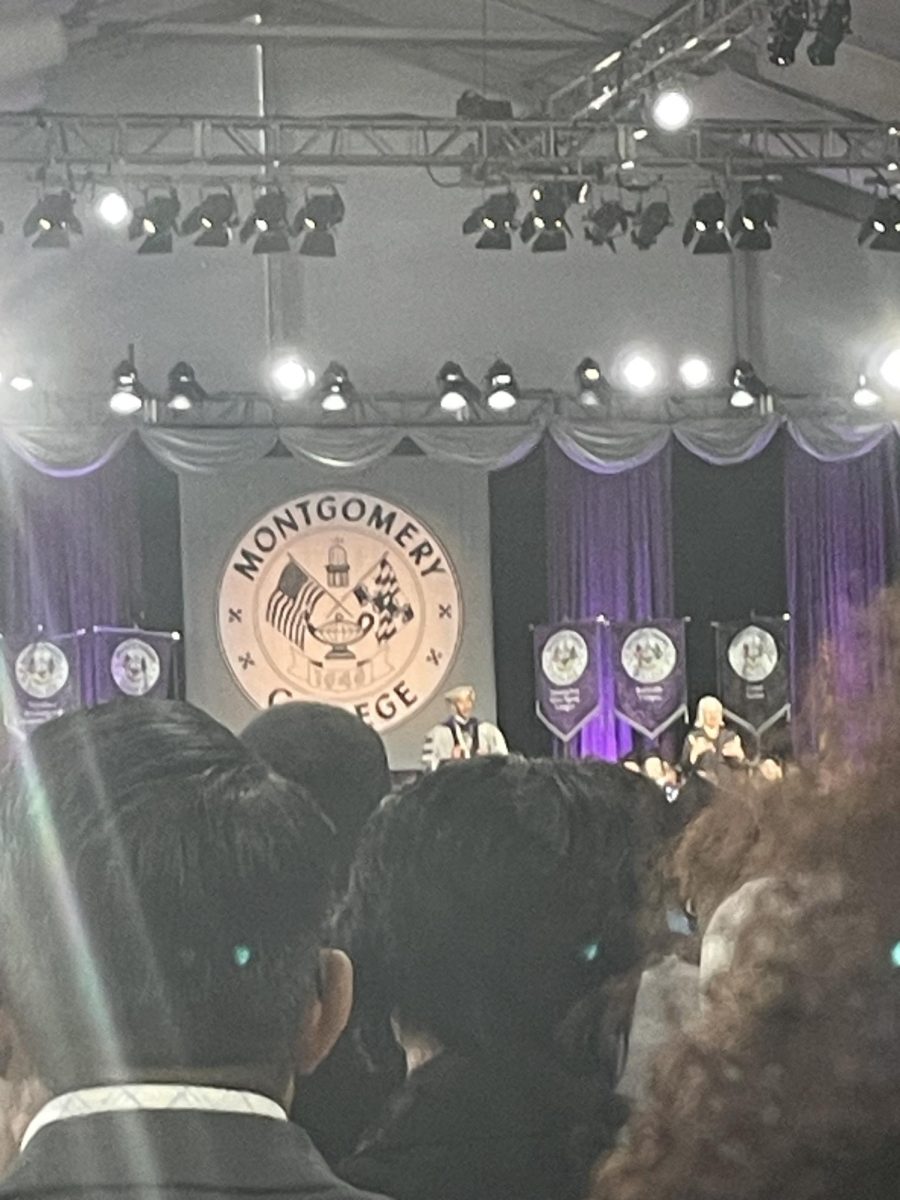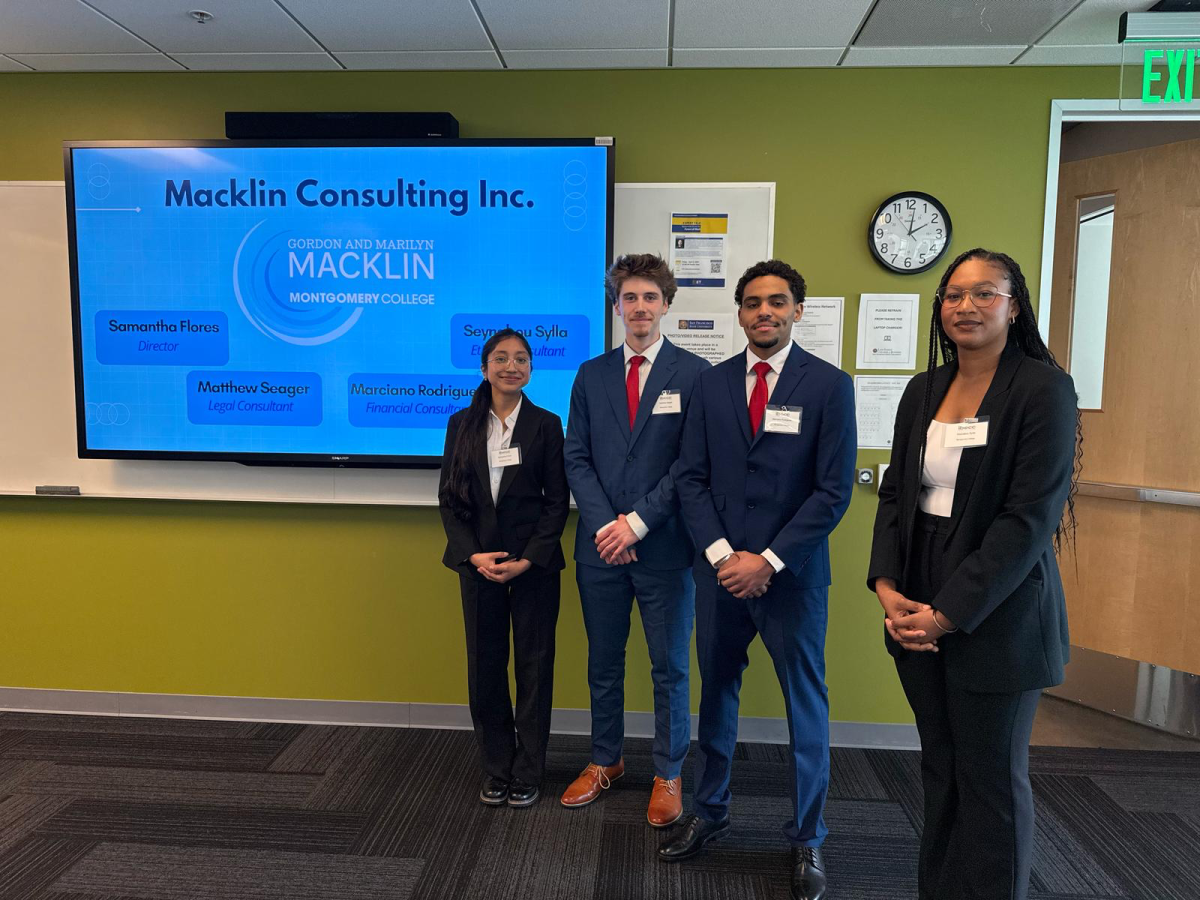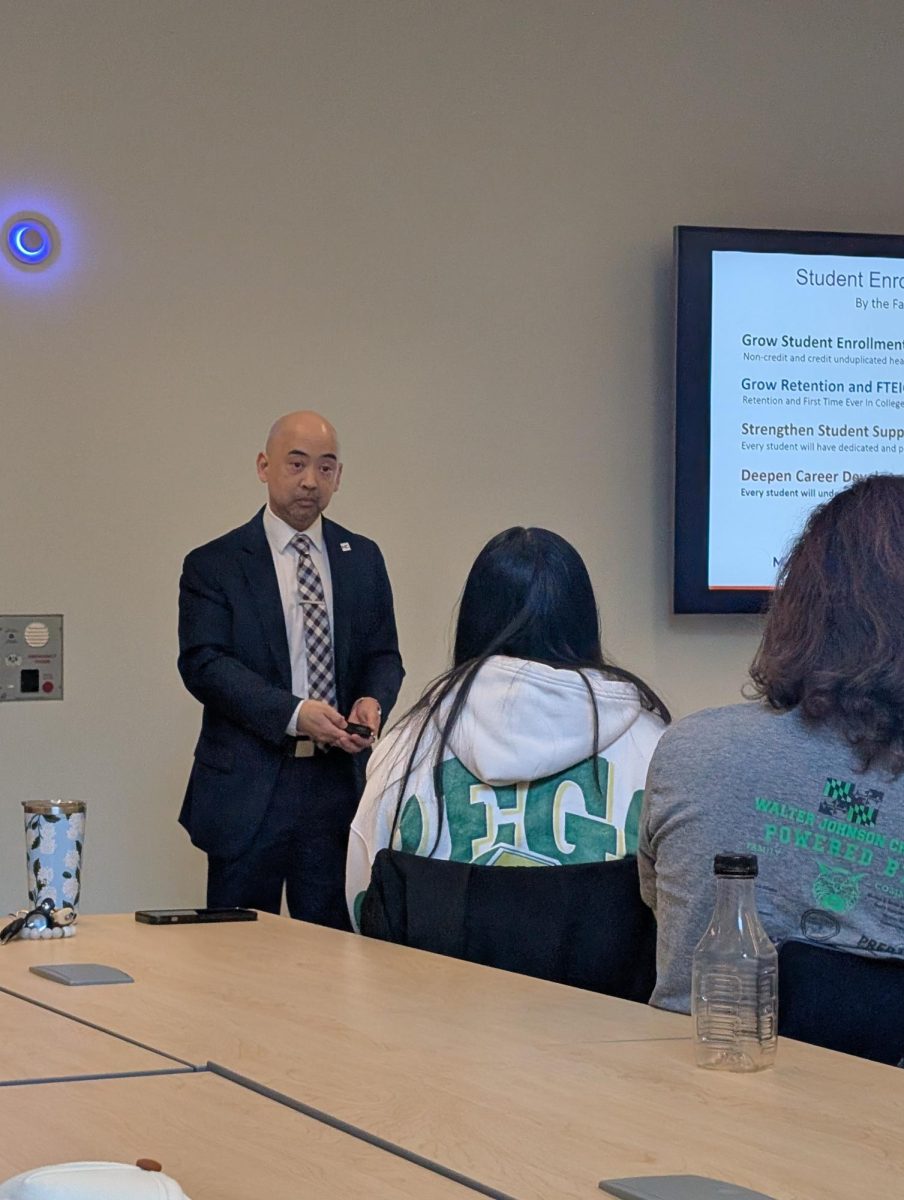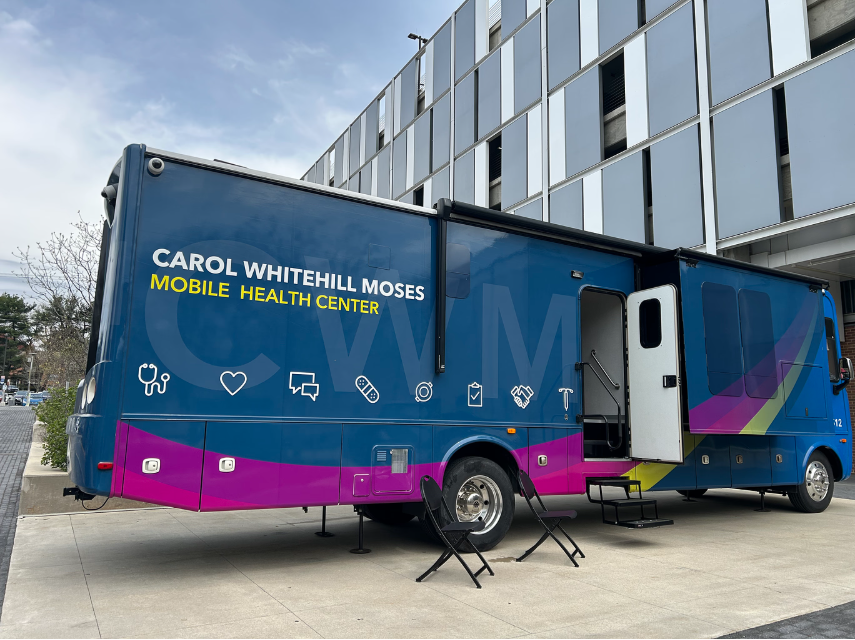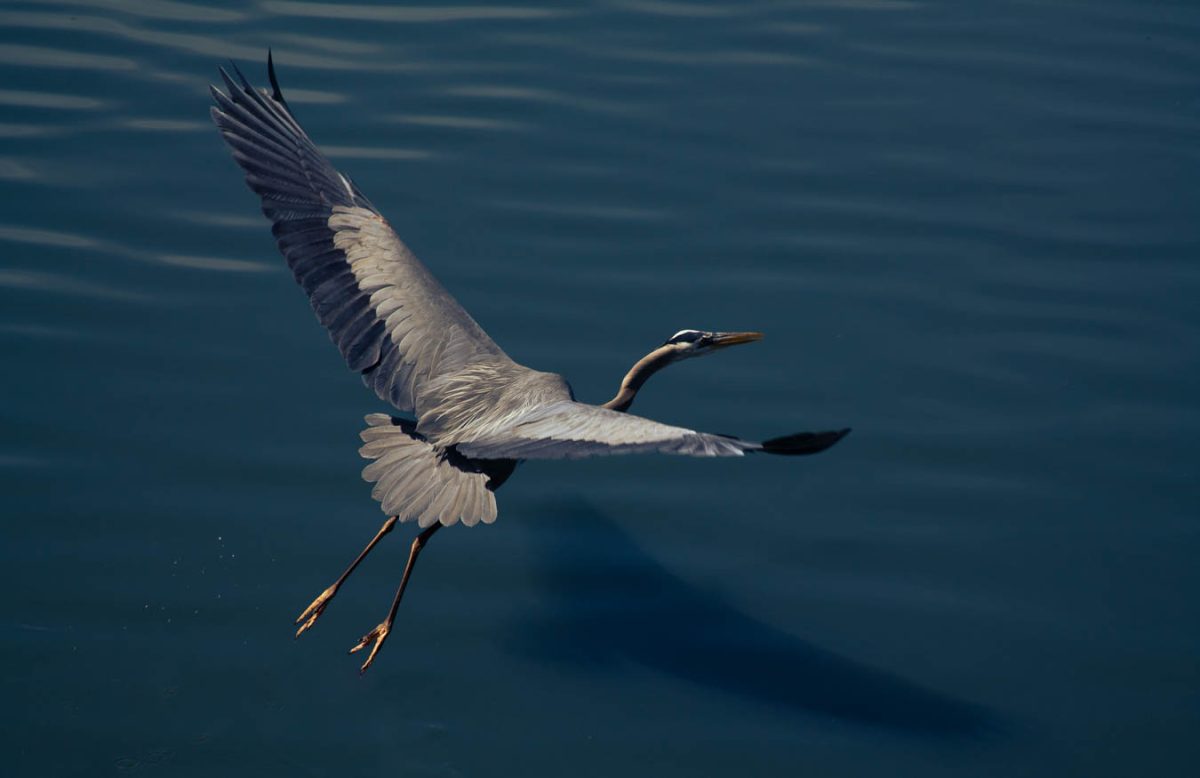Stephen Weigel Photography/Web Editor
One thing always on students’ minds, especially late in the semester while struggling over final projects, is whether their professor can actually do what it is being taught. For Communication Arts Technologies students, the answer to that question is available for viewing in Experiments – Where Art Meets Science, an exhibition hosted at the Communication Arts Technologies Gallery from November 7 through December 17.
Experiments, part of a year-long series of science related art exhibitions, is a collection of works including photography, graphic design and painting, produced by the faculty and staff of the Computer Graphics, Graphic Design and Illustration, Photography and Television & Radio programs at Montgomery College.
When photography first came on the scene, there was great controversy about whether or not it was actually “art.” Many art critics believed because it relied so heavily on technology, however basic that technology was at the time, photography was closer to a science than an art form. While most people today likely think of photography more as an art than a science, it is fitting that an exhibition focused on the intersection of art and science should have a large selection of photography displayed.
For John Hoover, Instructional Lab Coordinator for the Communication Arts Technologies Department, the exhibition was the perfect opportunity to exhibit his work in High Dynamic Range photography, more commonly referred to as HDR.
This type of photography, which has become popular among many digital photographers, is produced by digitally combining multiple exposures of the same image in an effort to retain detail in areas that in a typical, single exposure photograph would either be too bright or lost in shadow.
Hoover produced two images for the exhibition, Celebration, a photograph of a wine cellar, and Ponte Vecchio, a photograph of the famous bridge in Florence, Italy. Taking five different exposures of each scene, Hoover combined the exposures into a single image in Photoshop to create each HDR photograph.
Critics of HDR photography claim the technique makes the images look more like paintings than photographs. When asked his opinion, Hoover claims the blurring of that line is exactly “where art meets science.”
Like Hoover, Ed Riggs, Professor and Communication Arts Technology Department Chair, took advantage of modern digital technology for his submissions. However, unlike Hoover, whose concept from start to finish required digital technology, Riggs’ photographs were created long before computers dominated the editing process.
Using photographs originally taken by Elizabeth Judson Roberts around 1870, Riggs spent close to 100 hours meticulously restoring the images with Photoshop. The result is a pair of digital enlargements that give new life to Roberts’ original prints.
This process provides another example of where art meets science. While emerging technology continues to offer new ways of creating art, it also provides new ways of restoring art created in the past, preventing its message from literally fading with time.
Even before the theme of the exhibition was announced, Brian V. Jones, photography professor and Photography Program Coordinator, knew he wanted to produce a series of images not meant to emphasize his technical skill as much as tell a story which caused the viewer stop and think.
“They aren’t deep, but they are trying to say something,” Jones explains when asked about his submissions. “I’d rather not do work that simply says, ‘Look at me. Let me show you how good I am.’ At least that’s where I am at this moment.”
To create Untitled, a still life photograph of a bedside table scene, Jones purchased a pair of sheep eyes from a biological specimen company in North Carolina. The use of the eyes in the photograph is evidence of Jones’ ability to send a message through subtle humor that requires the viewer to do more than simply glance at his photographs.
“I wanted to create something that was interesting, if not beautiful to look at,” Jones said. While not creating something to hang over the living room fireplace, Jones unquestionably accomplished his goal.
While other photography professors have work being shown in the exhibition as well, it is important to note the exhibition is not limited strictly to photography. There are works in graphic design, paintings, as well as digital montages displayed in the gallery.
The gallery, located in room TC106 on the bottom floor of the Technical Center, is open weekdays from 9am to 5pm through the end of exam week. Any questions about the exhibition should be directed to Professor Martha Vaughan, who coordinated the show.

